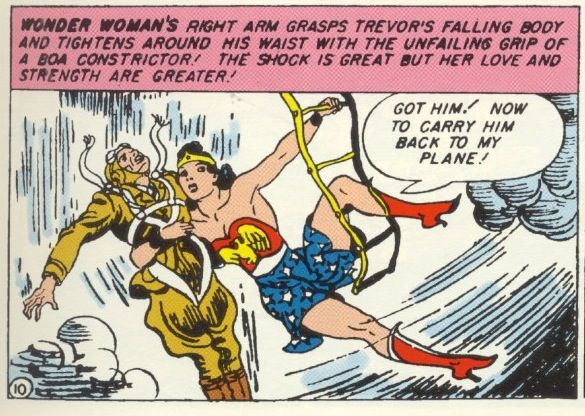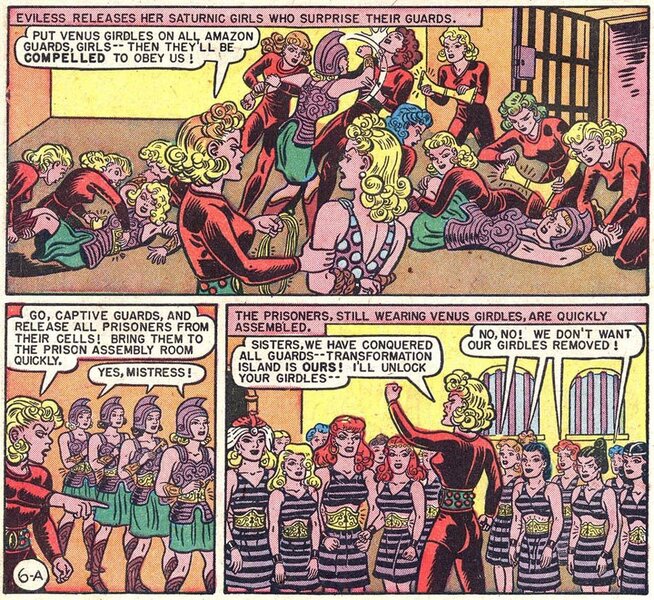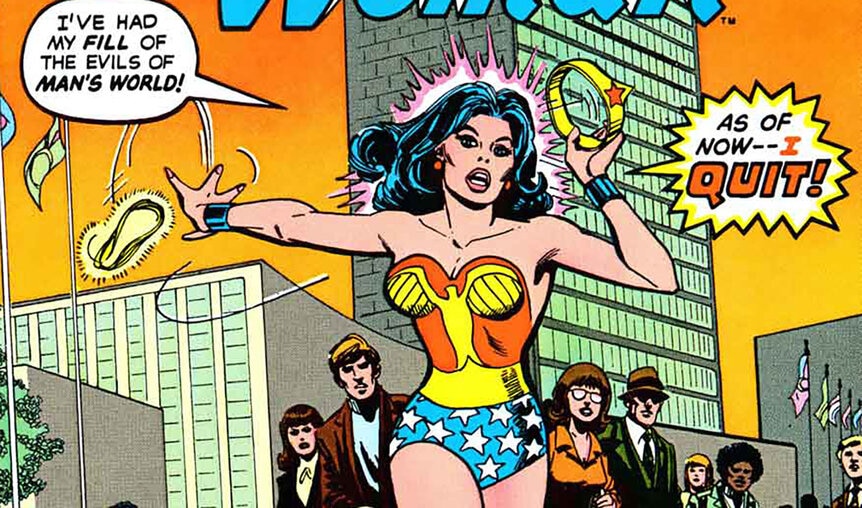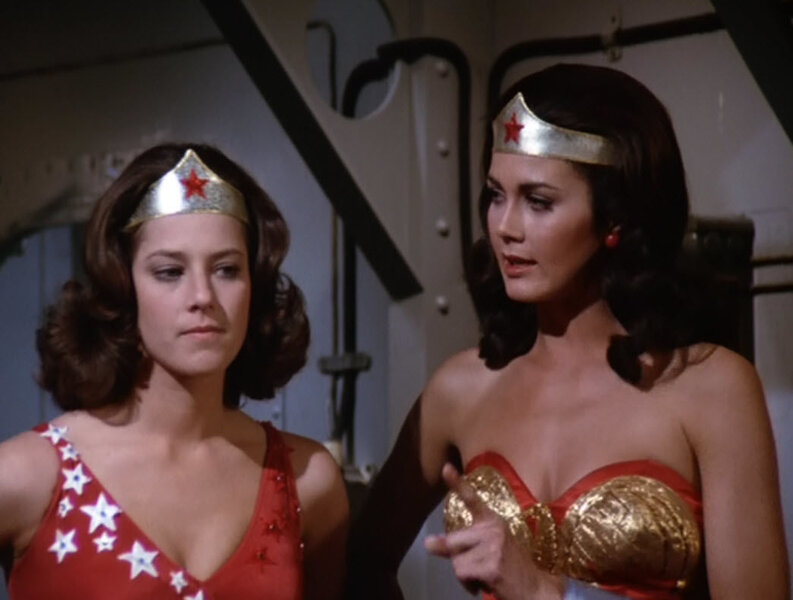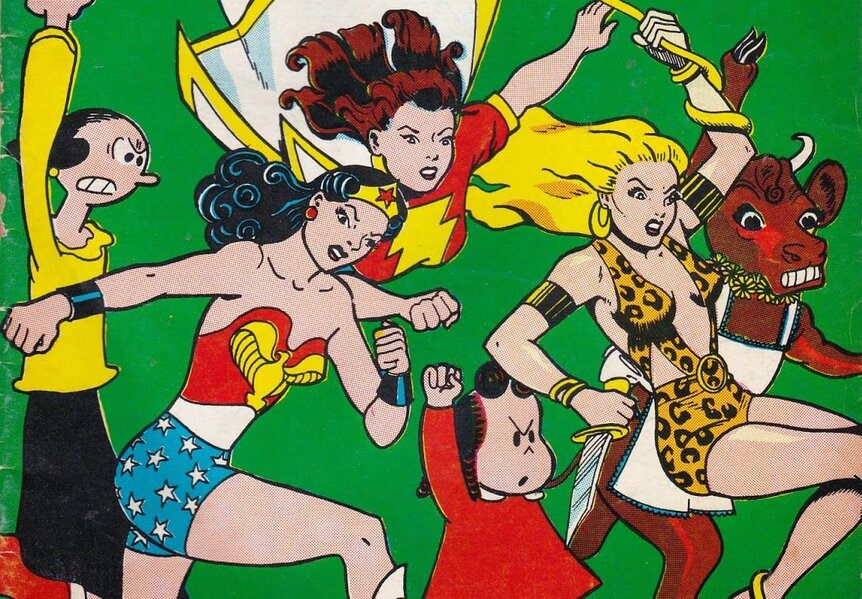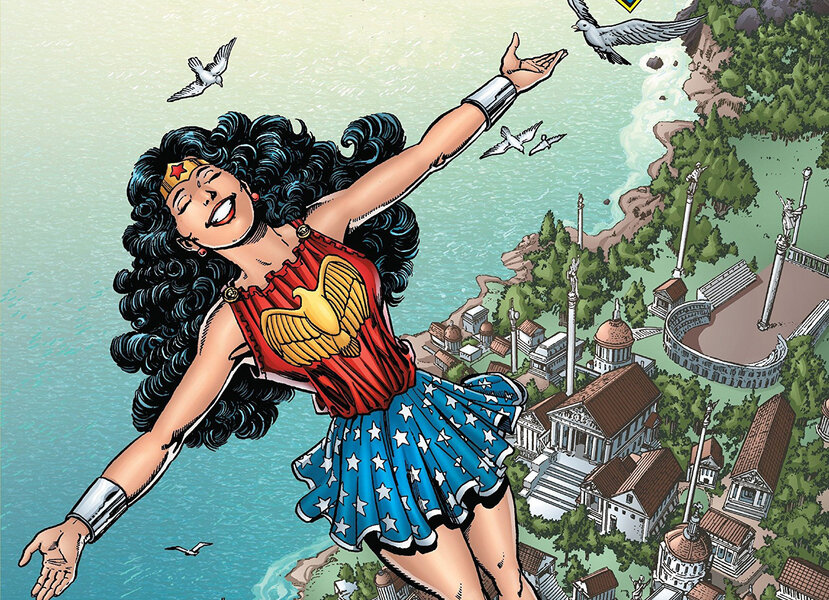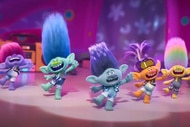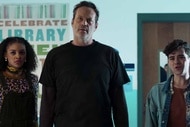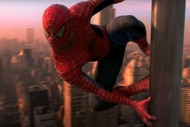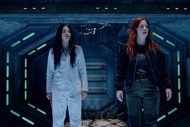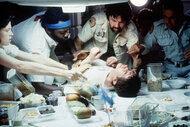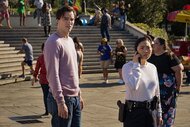Create a free profile to get unlimited access to exclusive videos, sweepstakes, and more!
The forgotten women of Wonder Woman
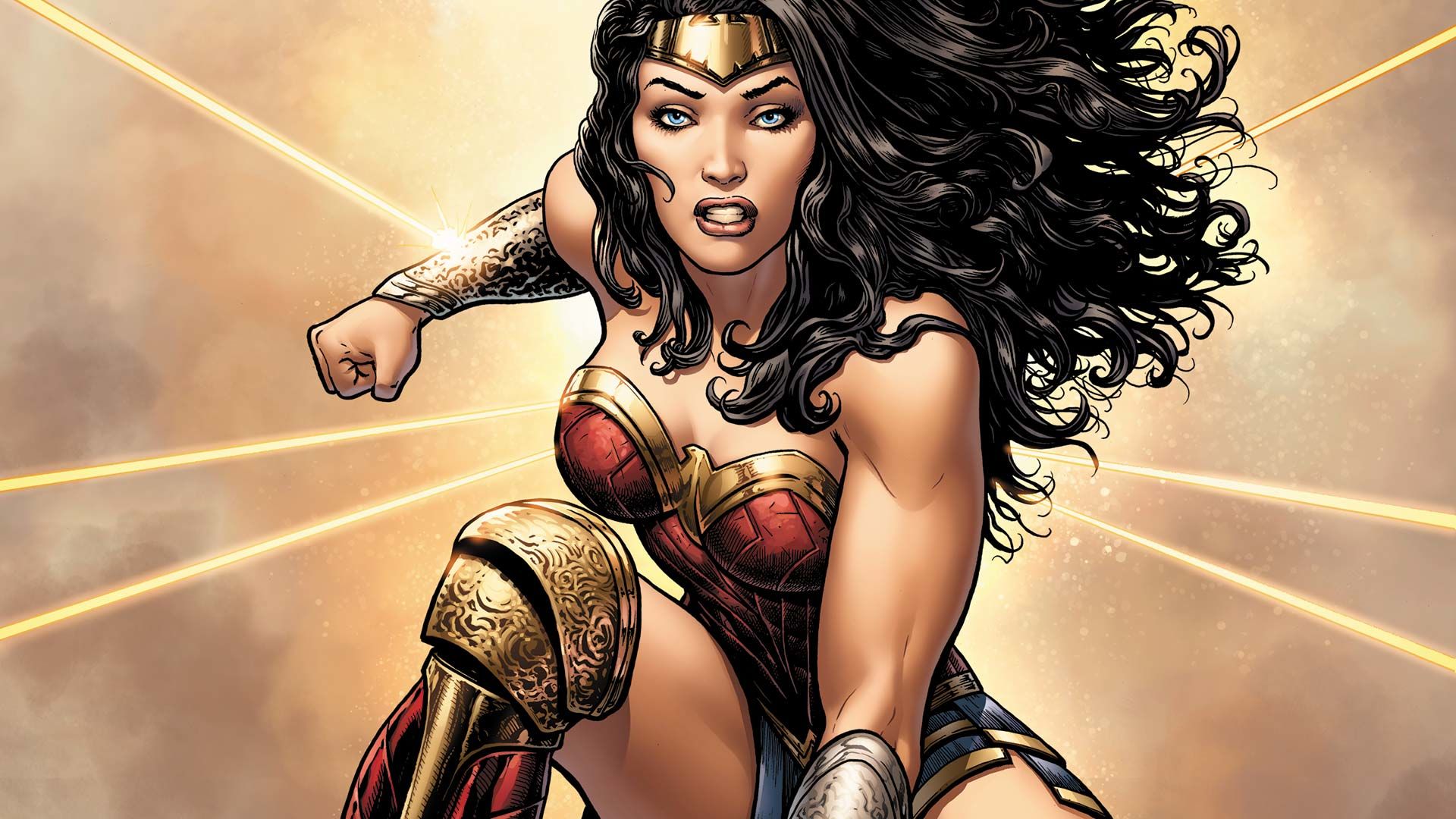
Wonder Woman is a feminist icon for a lot of people, and there are some pretty obvious reasons why. She was born without any assistance from a man, formed out of clay by her mother, and lived much of her life on an island of Amazons. Though she ultimately ditched that scene, it was to honor her upbringing by trying to bring peace to “the world of man.” That origin story alone is just about one of the most feminist things you were likely to read in a mainstream American superhero comic book in 1940. Or 1950. Or 2010.
Yet there have been some growing pains along the way. The fact that William Marston was using a lot of his wife’s ideas and basing a character on their live-in girlfriend Olive Byrne with no intention of crediting either of them is pretty questionable, to begin with. Intent is forever a different beast than its real-world results, but by failing to give credit where it was due, Marston unknowingly kicked off a pretty long history of women not exactly getting their due in the world of Wonder Woman. In fact, a lot of people believe that up until Gail Simone's iconic run beginning in 2008, there weren’t any women working behind the scenes on Wonder Woman at all.
This is resolutely not so! To honor the uncredited women behind the icon, one need look no further than the history books, beginning with ...
Marjorie Huntley, Elizabeth Halloway Marston, and Olive Byrne
Well, to kick it all off, the creator William Marston probably got a lot of the suggestions for the stories and scripts from the women around him. Closely connected to the feminist movement of the time via various familial relationships, Marston’s ideas didn’t exactly come out of a void. His wife Elizabeth Marston might be getting more recognition these days for her work on Wonder Woman, but it has come several decades after her death. Meanwhile, Olive Byrne and another occasional roommate of the Marstons, Marjorie Huntley, are rumored to be the visual and contextual inspiration for Wonder Woman.
Elizabeth, Olive, and William were recently the subject of a not-entirely historically accurate biopic that put a greater emphasis on the “progressive” relationship between the three of them more than their career achievements. Of course, it's normal for people to want to focus on the possibility of an illicit love affair between the women that inspired Wonder Woman, especially considering Wonder Woman’s own often unaddressed queerness. Regardless of whether or not Olive and Elizabeth were lovers, the clear sapphic overtones of Wonder Woman herself have been willfully ignored by editorial leads queer and straight audiences alike to draw certain parallels.
In the end, the most important part of Olive and Elizabeth’s relationship is that long after the man they loved passed away, they banded together and built an unconventional life together. Meanwhile, Marjorie Huntley probably helped to inspire most of the bondage aspect of the character, and she wasn’t even a footnote in the film. Altogether, it's difficult to say exactly how much influence each woman had, but there's pretty substantial evidence to support it was, collectively, a lot.
Joye Hummel
William Marston spent much of his later years working on Wonder Woman. As he grew older and became sick with polio in the ‘40s, his workload only continued to increase. Though Wonder Woman would soon be publicly attacked by a handful of writers and psychologists for encouraging lesbianism and as a result, the tone of the series would become oppressively prudish for decades to come, those days were still ahead. Wonder Woman not only had her own ongoing series, but she had just been given a nationally syndicated comics strip, and there was no way Marston could keep up.
Marston hired a 19-year-old who he referred to as his secretary to ghostwrite years of Wonder Woman stories under Marston’s name before he passed away and she was out of a job. This was Joye Hummel, whose work went completely unacknowledged until very recently. Today, she insists that she was never a secretary and her job was always to ghostwrite the series.
In a recent interview, Hummel compared her Bill Finger award with winning an Oscar, and it was pretty darn endearing and cathartic to see her so pleased to be honored for her work so many years past. Here’s to you, Joye.
Dorothy Woolfolk
Dorothy Woolfolk is a real woman of mystery as far as most writers are concerned, and there’s some conflicting timeline stuff with her that might take years or possibly forever to get straightened out. It is assumed that she may have scripted an issue or several of Wonder Woman somewhere along the line in her early career as an editor at DC, but we can’t say for sure as creators weren’t credited during her first stint with the company. Woolfolk vanished for a time, then returned to DC to take on new editing work, and this is where we have a little more information, though what we know is pretty rough.
After a short time spent editing a surprisingly feminist Lois Lane, Woolfolk was hired to edit Wonder Woman in much the same tone. Gloria Steinem’s Ms. Magazine had spent a lot of time calling out DC for its very unfeminist treatment of Wonder Woman. Woolfolk was a supporter and fan of Steinem’s work, and it is assumed her interest in the series was rooted in these critiques. A Woolfolk-edited Wonder Woman could have turned around a lot at DC, but, naturally, it was not meant to be, as another editor essentially sabotaged her, took her job, and showed an analog of her murdered on the page by a sniper in Wonder Woman.
This story is not great, but Dorothy Woolfolk sure is. Though this was sadly the end of her career in comics, she went on to write several YA books and was just recently posthumously honored with the Bill Finger Award.
Anne Collins
The Wonder Woman TV series of 1977 really isn’t given enough credit for being as truly bonkers as it was. That is one show that was so all-over-the-place that it makes Batman ‘66 seem surprisingly somber and coherent. This is a no shade zone, though — that is exactly why we love that series so much. One thing we don’t talk about that much, though, is that the primary screenwriter of the series was a woman named Anne Collins! Not just another scripter, Collins wrote more episodes than any other writer and worked as story editor and executive story consultant on many episodes besides.
Anne Collins hasn’t worked in television for quite a while from what we can tell and as such, it isn’t super easy to find out information on her, but she definitely worked on a few TV series that qualify her as a genre writer extraordinaire. This includes her writing at least 11 episodes of Buck Rogers in the 25th Century, nine episodes of Fantasy Island, and even a two-parter for the ‘80s Twilight Zone series. Even without all of that, helping to bring one of the most beloved superheroes to television for the first time ever? Kind of a big deal.
Trina Robbins
It's no secret that Trina Robbins is a FANGRRLS fave. She helped to begin a woman-oriented counterpoint to the overbearingly male-dominated indie comics scene in the ‘70s with the seminal anthology Wimmen’s Comix, for starters. Besides that, she has turned out archival works of comic history on a fairly regular basis with releases like Pretty In Ink, and as such she’s done a lot of work to help bring feminism to the world of mainstream superhero comics and comics criticism, and we really can’t thank her enough for that.
Then there’s the small fact that she also happens to be the first woman to ever draw Wonder Woman professionally. Teaming up with fellow critic and creator Kurt Busiek for a four-issue mini-series in ‘86, Robbins broke a forty-plus year streak of zero (known) women pencilers. This is no small feat, and it is just another reason we all remain pretty much in awe of Robbins.
Mindy Newell
Mindy Newell was hired on at DC through a talent search in the mid-’80s, thus becoming one of the only women writing for them at the time. She had what seemed to be a pretty solid start to a long and thriving career when she was signed on as the first woman (known) to write the Wonder Woman comic series. It really is too bad sexism is a thing, though, because that is not exactly how things went.
Newell felt intrinsically at odds with the character overall, but when given the job of scripting a story preconceived by an editor who she felt was completely unwilling to listen to her ideas, she rapidly lost what little interest she had in clicking with Diana of Paradise Island. She moved on to other projects after the close of what amounted to a fairly unsuccessful work experience. Later she returned to work with George Perez as the scripter on the series. For years, up until Gail Simone’s iconic take on the character, she would remain the only woman known to have carried a multi-issue run of Wonder Woman, which is, again, a feminist comic about a woman from an island of women.
